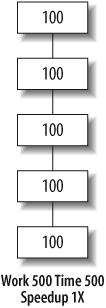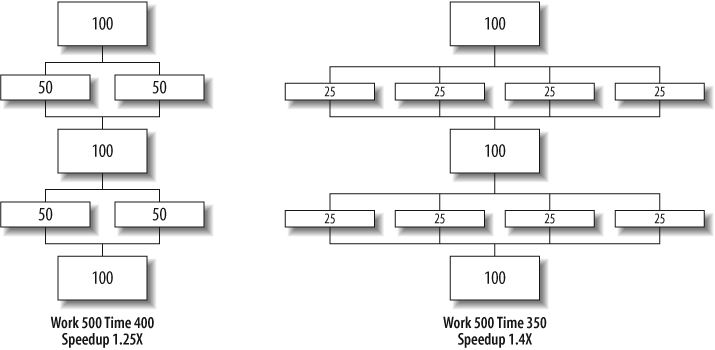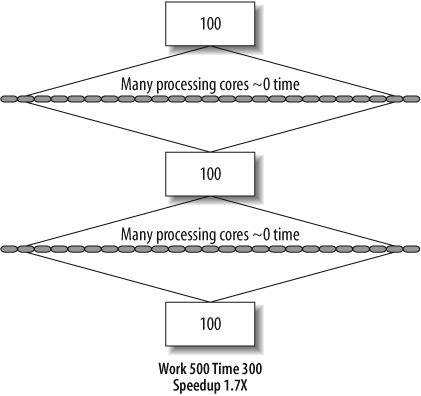Amdahl’s Law
Gene Amdahl, renowned computer architect, made observations regarding the maximum improvement to a computer system that can be expected when only a portion of the system is improved. His observations in 1967 have come to be known as Amdahl’s Law. It tells us that if we speed up everything in a program by 2X, we can expect the resulting program to run 2X faster. However, if we improve the performance of only half the program by 2X, the overall system improves only by 1.33X. Amdahl’s Law is easy to visualize. Imagine a program with five equal parts that runs in 500 seconds, as shown in Figure 2-9. If we can speed up two of the parts by 2X and 4X, as shown in Figure 2-10, the 500 seconds are reduced to only 400 and 350 seconds, respectively. More and more we are seeing the limitations of the portions that are not speeding up through parallelism. No matter how many processor cores are available, the serial portions create a barrier at 300 seconds that will not be broken (see Figure 2-11).

Figure 2-9. Original program without parallelism

Figure 2-10. Progress on adding parallelism

Figure 2-11. Limits according to Amdahl’s Law
Parallel programmers have long used Amdahl’s Law to predict ...
Get Intel Threading Building Blocks now with the O’Reilly learning platform.
O’Reilly members experience books, live events, courses curated by job role, and more from O’Reilly and nearly 200 top publishers.

